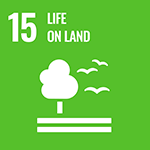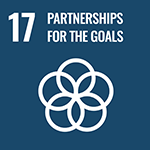Biodiversity conservation in Amazon based on a new concept of "Field Museum"
Principal Investigator


Dr.
National Institute for Amazonian Research (INPA)
Vera M. F. da Silva
ODA Recipient Country
Federative Republic of Brazil
Research Institutions in Japan
Kyoto University
Research Institutions in Counterpart Country
National Institute of Amazonian Research (INPA)
Adoption fiscal year
FY 2013
Research Period
5 Years
Overview of the Research Project
Contributing to sustainable regional development while conserving the Amazonian ecosystem
The precious Amazonian ecosystem in the outskirts of Manaus, Brazil is in danger. It is here that a Field Museum Network, consisting of facilities for observational studies of nature and a nature reserve, has been established. In addition to conducting research that makes use of bio-logging* and other cutting-edge Japanese technology and establishing methods of conserving ecosystems, this project aims to achieve sustainable development of the local society and economy through ecotourism and other means. In addition, the project is attempting to develop programs for environmental education and ecotourism and establish an organizational structure for self-sustaining operation.
* Bio-logging: A research method that enables behavioral and ecological studies by attaching miniaturized cameras and sensors to animals.
A model of coexistence between humanity and nature centered on field museums!
In addition to conserving the precious nature of the Amazon, the establishment of the Field Museum Network also makes possible the building of social systems that are economically sustainable. The deployment of this model to other tropical countries and regions dealing with the problem of the destruction of nature due to urbanization could contribute to conservation of the global ecosystem and biodiversity.
Photo gallery
Research Project Web site
Press Release
Links
Projects
Contact Us
Japan Science and Technology Agency (JST)
Department of International Affairs
SATREPS Group
TEL : +81-3-5214-8085
Related articles by Category
- Global-scale environmental issues
Environment / Energy
(Global-scale environmental issues)
 Republic of Kazakhstan
Republic of Kazakhstan
Aim for zero pollution by digitizing mines with “Smart Mining Plus”!
Next-generation Smart Mining Plus for Sustainable Resources Development
- Brazil
Environment / Energy
(Climate Change)
 Federative Republic of Brazil
Federative Republic of Brazil
Health Checkup for the World’s Lungs: Measuring the Carbon Stocks in the Amazon Forests
Carbon Dynamics of Amazonian Forests
- Latin America
Disaster Prevention and Mitigation

 Republic of El Salvador
Republic of El Salvador
Protecting international port cities from compound disasters with dominostyle chains of destruction!
Compound Disaster Risk Reduction associated with Large Earthquakes and Tsunamis
- SDGs : Goal.15
Environment / Energy
(Global-scale environmental issues)
 Republic of Peru
Republic of Peru
Solve the challenges facing the Andean-Amazon region by sustainable forest management
Establishment of Integrated Forest Management System Model for Conservation of Mountain Forest Ecosystems in the Andean-Amazon





















